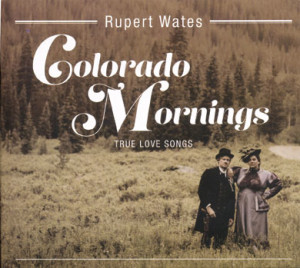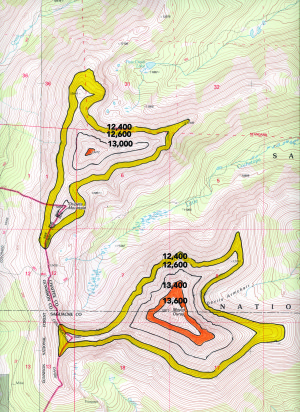By Mike Rosso
After taking one issue and a few weeks off, we’re putting the final touches on the March issue. We hope you enjoy the wide variety of content offered up this month by our talented contributors.
During our time off, we took a promised road trip to southern New Mexico, beginning with the familiar – Santa Fe – then on to new places. After driving the back road south through Madrid, we visited the home of Bill Bussman, who resides in a canyon alongside Animas Creek, east of Truth or Consequences. Bill is a mandolin maker and a true desert rat. We stayed in his hand-built adobe “basement” – an above-ground structure which, upon entering, has walls fully adorned with bass guitars. Bill also hiked us up the canyon to some very remote Native American ruins, where we inspected metate stones and pot shards.
A long, winding road through the Gila National Forest took us to our next destination, Silver City, a blue collar mining town with a thriving bohemian arts community. It reminded me a little of Salida, with its galleries and coffee houses, but more gritty, with some authentic Old West miner types scattered around.
We then headed south, with a stop at City of Rocks State Park, a one-square-mile area with some amazing volcanic rock formations jutting out of the barren desert landscape. Jumping on I-10, we passed through Las Cruces on our way to White Sands National Monument, a real highlight of the trip. Though it was a windy day, it was warm, and hiking among the bright white gypsum dunes seemed otherworldly, with little vegetation and miles of sand in all directions. It was an interesting contrast to our own Great Sand Dunes National Park.
That evening was spent in La Luz, a small village north of Alamagordo, in the company of Craig Redmiles, a subscriber to CC who showed us wonderful hospitality in his unique round house constructed of brick. He sent us packing with pecans from his backyard orchard for the trip back, which included a stop at the Three Rivers Petroglyph Site, with over 21,000 petroglyphs recorded. Then it was up through the funky little town of Carrizozo on Hwy. 54, and back to Santa Fe.
Although we passed through much beautiful scenery on this trip, it’s always a treat to return to the Upper Arkansas Valley. We here live in a magnificent place, surrounded by vast amounts of natural public land, with no mining pits, gas wells or other signs of industrial impact.
[InContentAdTwo]
Which brings me to all this noise we’re now hearing about selling off public lands. “Return it to the states,” is one refrain we’re hearing from the far right politicians and their financial backers, such as the American Legislative Exchange Council (ALEC), an East Coast nonprofit, which derives much of its income from the infamous Koch Brothers.
ALEC is drafting bills for certain western politicos such as Utah Rep. Ken Ivory, who sponsored the Transfer of Public Lands Act, demanding that Congress give states control of public lands. The hope is that once these public lands have been turned over to the states, it will be easier for corporations to gain access to them for purposes of oil and gas exploration, clear-cutting and other high-impact exploitation.
Currently there are three ALEC-driven bills being considered by the U.S. House which would allow for the seizure by states of public lands. Fortunately, President Obama can still wield his veto pen, but what if, after November, we are faced with a President Trump?
Fortunately, we in Colorado have legislators such as Sen. Kerry Donovan, D-Vail, who has sponsored a bill, SB16-021, which would designate the fourth Monday in March as Public Lands Day, “to recognize the significant contributions that national public lands within Colorado make to wildlife, recreation, the economy and to Coloradans’ quality of life.”
To myself and many others in the West, our public lands are our most valuable resource. Once despoiled, there is no going back. Just take a hike in any National Forest or Wilderness Area, and it’s not hard to recognize the great value of these wild places in modern society.


